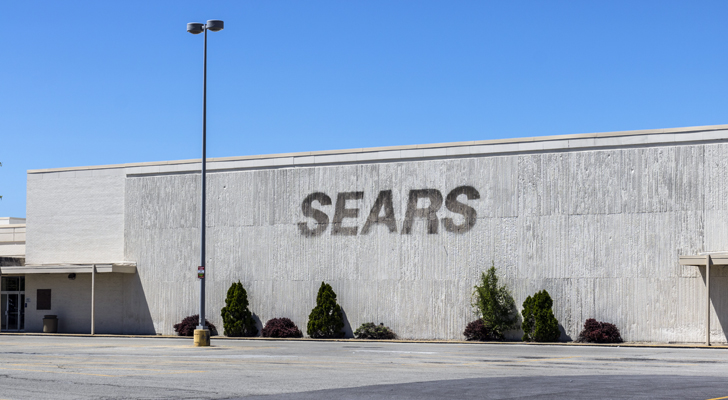Once the face of retail in America, Sears (NASDAQ:SHLD) has struggled to compete for the past several years in the space it once dominated.
The company failed to adapt to the new era of e-commerce, and as a result, it has lost 60% of its sales since 2011. The big sales drop led to a huge profitability drop, and in that time span, Sears managed to pile up $11 billion in cumulative losses. To make matters worse, the balance sheet is loaded up with debt. Overall, to most market observers, Sears stock has for a long time been nothing more than a ticking time bomb.
It looks like that ticking time bomb might explode soon.
According to the Wall Street Journal, Sears has hired boutique restructuring firm M-III Partners to “prepare a bankruptcy filing that could come as soon as this week.” The short of it is that Sears has $134 million in debt due on Monday. Debt becoming due isn’t the novel thing here.
Hedge fund manager Sears chairman Eddie Lampert has usually staved off bankruptcy before by making the debt payment. But, the novel thing is that Lampert won’t be making the payment this time. Instead, he wants to restructure the company in a big way, and with mountains of debt on the balance sheet, such a restructuring would most likely include a bankruptcy filing.
So, here we are. Once one of the largest and most powerful retailers in the world, Sears is days away from a bankruptcy filing.
SHLD stock is trading down on the news. As of this writing, SHLD stock is down about 30% to fresh all-time lows of 40 cents. Given the present situation, there is only more pain ahead for SHLD, and buying the dip here is much worse than trying to catch a falling knife. It is trying to catch a bomb that is ready to explode.
How Sears Stock Got Here
Sears was once one of the largest and most powerful retailers not just in America, but in the world. As recently as 2001, both Sears and Kmart (which Sears owns) were among the ten largest retailers in the world. Today, Sears is on the verge of bankruptcy.
The demise of Sears is one of the more interesting stories in the market, and it is full of lessons for market observers. The two biggest of those lessons? Leverage can be a company’s Achilles heel, and cost-cutting without investment usually kills growth.
Many would say the Sears ship sunk because of the massive debt load on the company’s balance sheet. As losses ran up, so did the company’s debt load. With such a large debt load, Sears’ hands were tied when it came to improving operations. They didn’t have enough cash to do so, and even if they funded such improvements through debt, that would only further burden the already distressed company. Plus, the debt became a ticking time bomb. With losses adding up and finite resources on the balance sheet, eventually the debt bomb would explode and Sears would file for bankruptcy.
The other big thing that crippled Sears was a focus on cost-cutting at the expense of growth and improvement. As e-commerce went mainstream at the start of this decade, Sears started losing market share and sales dropped. In response, Sears should have invested into e-commerce, updated store presentations, and improved product assortment.
Those growth investments would’ve reinvigorated sales and traffic growth, and kept Sears afloat. See Walmart (NYSE:WMT), Target
(NYSE:TGT) and Macy’s (NYSE:M), to name a few.
Instead, Sears cut expenses and ran a “bare bones” model. That didn’t help the situation. Without a formidable e-commerce presence, Sears missed out on the whole e-commerce train. And, without pleasant store presentations, consumers who did still shop in-store didn’t want to shop at Sears locations. Thus, by cutting out expenses without investing, Sears made itself the eyesore of retail.
Where Sears Goes Next
Eddie Lampert has a plan for SHLD stock. He wants to restructure the whole business to make it a smaller and actually profitable operation.
Specifically, Lampert wants to sell $1.5 billion in real estate and divest $1.75 billion of other assets. In so doing, he hopes to cut $1 billion from the company’s $5.5 billion debt load. The end result will be a smaller Sears that will be able to invest in itself and hopefully turn a profit.
I think this could happen. The only way Sears stock survives is if it shrinks by a ton.
But, such a restructuring will be tough, costly and time-consuming. And, it would likely happen after a bankruptcy filing and after current shareholders are wiped out.
Thus, buying SHLD stock here seems like a lost cause.
Bottom Line on SHLD Stock
The SHLD bankruptcy that we all knew was coming is almost here. As such, there is no reason to own SHLD stock at this point in time.
As of this writing, Luke was long WMT.

